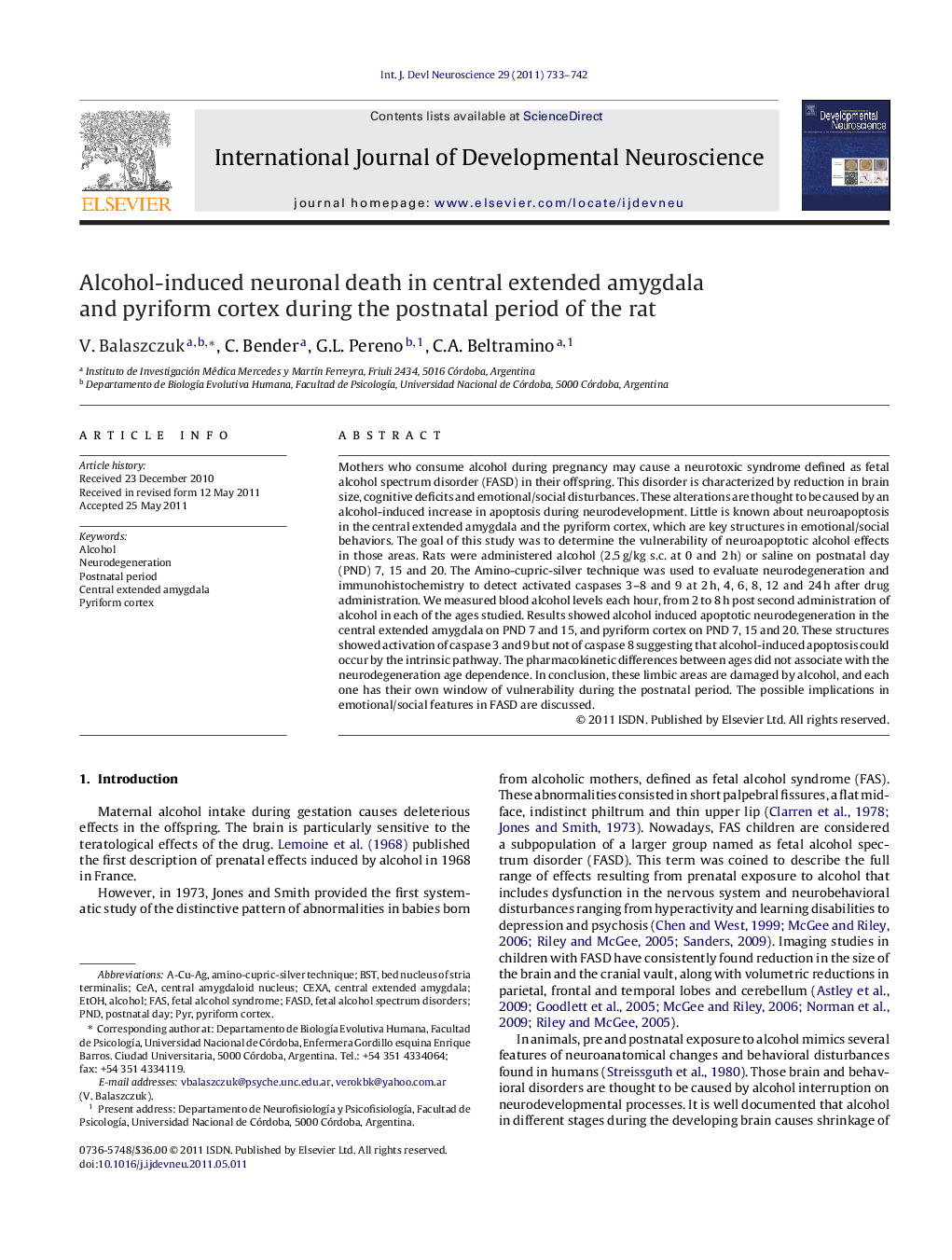| Article ID | Journal | Published Year | Pages | File Type |
|---|---|---|---|---|
| 2786456 | International Journal of Developmental Neuroscience | 2011 | 10 Pages |
Mothers who consume alcohol during pregnancy may cause a neurotoxic syndrome defined as fetal alcohol spectrum disorder (FASD) in their offspring. This disorder is characterized by reduction in brain size, cognitive deficits and emotional/social disturbances. These alterations are thought to be caused by an alcohol-induced increase in apoptosis during neurodevelopment. Little is known about neuroapoptosis in the central extended amygdala and the pyriform cortex, which are key structures in emotional/social behaviors. The goal of this study was to determine the vulnerability of neuroapoptotic alcohol effects in those areas. Rats were administered alcohol (2.5 g/kg s.c. at 0 and 2 h) or saline on postnatal day (PND) 7, 15 and 20. The Amino-cupric-silver technique was used to evaluate neurodegeneration and immunohistochemistry to detect activated caspases 3–8 and 9 at 2 h, 4, 6, 8, 12 and 24 h after drug administration. We measured blood alcohol levels each hour, from 2 to 8 h post second administration of alcohol in each of the ages studied. Results showed alcohol induced apoptotic neurodegeneration in the central extended amygdala on PND 7 and 15, and pyriform cortex on PND 7, 15 and 20. These structures showed activation of caspase 3 and 9 but not of caspase 8 suggesting that alcohol-induced apoptosis could occur by the intrinsic pathway. The pharmacokinetic differences between ages did not associate with the neurodegeneration age dependence. In conclusion, these limbic areas are damaged by alcohol, and each one has their own window of vulnerability during the postnatal period. The possible implications in emotional/social features in FASD are discussed.
► Alcohol-induced neuroapoptosis during postnatal period. ► Central extended amygdala and pyriform cortex are sensitivity to alcohol effect. ► Alcohol-induced apoptosis could occur by the intrinsic pathway. ► Ethanol pharmacokinetic is different on postnatal day 7, 15 and 20.
